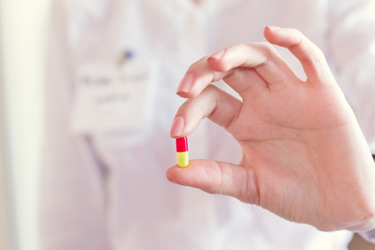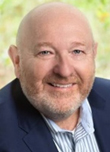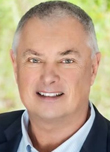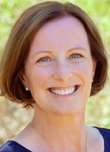Sorriso's Path To Oral Biologics Dosing Is Through The Gut
A conversation with Ciara Kennedy, Marcus Webb, and Brian Dorsey, Sorriso Pharmaceuticals

Producing orally dosed antibodies remains a persistent enigma except in one area where the path forward appears to be clearing — local gastrointestinal activity.
One company advancing its pipeline with a lead candidate to treat ulcerative colitis has found that producing copious amounts of a rugged, bispecific single-domain antibody, targeting TNFa and IL-23, and applying established finishing practices can help provide clinical relief for suffering patients.
Following positive results from a Phase 1b clinical trial, Sorriso Pharmaceuticals is preparing to launch its Phase 2 trial for the bispecific single-domain antibody SOR102 later this year. As it scales up, the company is finding efficiencies at both ends of the production cycle — from high-yield yeast expression upstream to highly scalable spray-drying techniques downstream.
We wanted to learn more about how Sorriso’s Vorabody platform and yeast expression system support the oral delivery of antibodies — preparing proteins to shuttle through a proteolytic hellscape before reaching their destination.
To help, three Sorriso leaders — founder, President, and CEO Ciara Kennedy; Senior Vice President of Technical Operations Marcus Webb; and founder, Chief Operations Officer Brian Dorsey — answered a few questions. Their responses have been edited for clarity.
Why did you choose the yeast system over a bacterial or mammalian system?
Dorsey: The choice of a yeast expression system is a combination of cost and scale. We are dosing orally, and then we have no dose limiting toxicities, so we can administer high doses and will need large quantities of drug substance. A yeast system allowed us to scale rapidly. Ultimately, there's no limit to the amount you can scale yeast.
Webb: Compared to a typical mAb cell line platform like CHO or HEK, there are significant production advantages with yeast expression systems from both a robustness and ease of scalability point of view. With yeast we can make 10x jumps in production scale with very little risk. Other cell line systems inherently aren’t able to make those types of scale jumps and an extended seed train is required prior to the final production scale.
Additionally, the specific yeast platform we use is regarded as GRAS by the FDA — generally regarded as safe. So, there is no downstream viral clearance process step requirement, which is a necessity of the typical mammalian production cell lines.
Kennedy: Individual products have been engineered to enhance protease resistance so that activity is maintained throughout the GI tract and in inflamed tissue, which obviously is a prerequisite to having any sort of biological clinical activity. That's more of a design of the antibody construct versus the expression system.
Webb: These Vorabody single-domain antibodies are very robust from a temperature resistance perspective, resulting in a room temperature stable spray-dried drug substance. In essence, we bridge the biologics world with the drug substance manufacturing process and the small molecule world with the drug product process, resulting in an orally delivered biologic.
The drug substance is all biologics-driven manufacturing processes and specifications, and we make the switch into the oral solid dose world for the drug product formulation and manufacturing. That switch starts at the end of the drug substance manufacturing process where we end up with a very stable spray-dried drug substance, which is very atypical compared with your normal biologic product.
The Phase 1b trial enrolled 22 patients. Presumably, Phase 2 will include many more than that. How are you scaling up production?
Webb: The initial goal was speed to clinic, which we successfully achieved. Now we are taking some time to optimize the cell line and both upstream and downstream manufacturing processes prior to initiating the Phase 2 clinical batches. We will also consider an additional scale-up at Phase 2 to approach our final commercial scale.
Our toxicology-phase manufacturing scale was 3,000-liter fermentation, and we made a single jump for Phase 1 clinical material production to 35,000-liter fermentation. We have completed cell line engineering for the Phase 2 process. As we introduce the new cell line we will ensure, from a characterization perspective, that we are producing the same molecule.
Three thousand liters to 35,000 liters almost seems unheard of in this business.
Webb: From a mAb perspective, I'd agree. My background is almost 30 years working in the mAb manufacturing processes field, and the biggest mAb tanks I've ever seen were 20,000-liters, and it took us 25 years to get to that scale.
But with the yeast expression system, from an engineering and process development perspective, we expect to successfully scale beyond 35,000-liters up to 60,000-liter fermentation or beyond if required.
Dorsey: I'm always the Debbie Downer in the room, so it's not all rainbows and unicorns. There are pieces of the process that scale, and as Marcus was saying, the fermentation piece is one of those.
Developing the rest of the process with the scale of fermentation is not trivial.
And over the course of bridging the gap between Phase 1b and Phase 2, and ultimately into Phase 3, there is a lot of engineering work on the physical plant infrastructure to ensure we can handle the large amounts of protein produced at these scales.
35,000-liters produces a lot of material, right? We need to make sure we have the entire manufacturing process aligned, as Marcus said, that's where a lot of our focus is, and that is not a trivial exercise and involves capital improvements to the plant.
Bigger picture — does what you're doing now inform the broader goals of developing orally administered biologics for systemic action? Is there any kind of knowledge gained here that can inform those explorations?
Kennedy: Currently, the Sorriso technology is configured to deliver drug directly to diseased tissue (intestinal, lung etc), to maximize concentrations at the site of disease while minimizing systemic exposure. We do have a desire to explore formulations that, with penetration enhancement elements, would allow us to target systemic disease through an orally delivered biologic to really get that oral to systemic approach.
That's not something we've worked on yet, but it’s definitely something we plan to explore in the future.
So, inherently, you want the opposite of systemic activity. Is that correct?
Kennedy: SOR102 is not gut restricted, we do detect low levels of drug in the serum. Some drugs are designed to be gut-restricted and not leave the GI tract. That's not our approach, our formulation, or even our desire.
We are looking to maximize tissue-level concentrations because we believe, from a biology perspective, for inflammatory bowel disease, that's what's going to drive maximal efficacy. And we've seen that with other products, even systemically delivered products that are active in, for example, dermatological indications, but need double the dose to be active in inflammatory bowel indications because you really want to drive that tissue concentration level.
We do see low-level systemic exposure, so we're not trying to prevent that, but we're just not currently optimized for that.
About The Experts:
 Brian Dorsey is a founder and chief operating officer at Sorriso Pharmaceuticals. He has served in the pharmaceutical and biotechnology industries for more than 30 years providing leadership of pharmaceutical candidates from early development through FDA approval. He is a founding partner at MagnaSci Ventures, a healthcare fund, and numerous companies, including Kalyra Pharmaceuticals and Septum Solutions. He has held senior management positions at Apricus BioSciences, Pernix Therapeutics Holdings, Somaxon Pharmaceuticals, Maxim Pharmaceuticals, Baxter Bioscience, and Chugai Biopharmaceuticals. He has also held several positions within the Agouron/Warner Lambert/Pfizer organization. He currently serves on the board of directors for Forward Sciences and Blacksmith Medicines. He received an M.S. in executive leadership and a B.A. in chemistry from the University of San Diego.
Brian Dorsey is a founder and chief operating officer at Sorriso Pharmaceuticals. He has served in the pharmaceutical and biotechnology industries for more than 30 years providing leadership of pharmaceutical candidates from early development through FDA approval. He is a founding partner at MagnaSci Ventures, a healthcare fund, and numerous companies, including Kalyra Pharmaceuticals and Septum Solutions. He has held senior management positions at Apricus BioSciences, Pernix Therapeutics Holdings, Somaxon Pharmaceuticals, Maxim Pharmaceuticals, Baxter Bioscience, and Chugai Biopharmaceuticals. He has also held several positions within the Agouron/Warner Lambert/Pfizer organization. He currently serves on the board of directors for Forward Sciences and Blacksmith Medicines. He received an M.S. in executive leadership and a B.A. in chemistry from the University of San Diego.
 Marcus Webb is senior vice president of technical operations at Sorriso Pharmaceuticals. Previously, he was a principal at CnA Consulting Group LLC. Before that, he was a senior director of capital expansion and real estate at Shire Pharmaceuticals. Other past roles include posts at Pacira Pharmaceuticals, Biogen, IDEC, and Genzyme. He received an M.Sc. in control engineering from Bradford University. He is a registered engineer in the U.K. and European Union.
Marcus Webb is senior vice president of technical operations at Sorriso Pharmaceuticals. Previously, he was a principal at CnA Consulting Group LLC. Before that, he was a senior director of capital expansion and real estate at Shire Pharmaceuticals. Other past roles include posts at Pacira Pharmaceuticals, Biogen, IDEC, and Genzyme. He received an M.Sc. in control engineering from Bradford University. He is a registered engineer in the U.K. and European Union.
 Ciara Kennedy is founder, president, and CEO at Sorriso Pharmaceuticals. Previously, she was involved in the development and approval of two drugs, Savella and Livmarli. Before Sorriso, she was CEO at Amplyx Pharmaceuticals and COO at Lumena Pharmaceuticals. She’s a founder of Reneo Pharmaceuticals and Mirium Pharmaceuticals. She received her Ph.D. in biochemistry and an MMedSc degree in biochemistry and immunology from the Queen’s University of Belfast. She received an MBA from the Rady School of Management at the University of California San Diego
Ciara Kennedy is founder, president, and CEO at Sorriso Pharmaceuticals. Previously, she was involved in the development and approval of two drugs, Savella and Livmarli. Before Sorriso, she was CEO at Amplyx Pharmaceuticals and COO at Lumena Pharmaceuticals. She’s a founder of Reneo Pharmaceuticals and Mirium Pharmaceuticals. She received her Ph.D. in biochemistry and an MMedSc degree in biochemistry and immunology from the Queen’s University of Belfast. She received an MBA from the Rady School of Management at the University of California San Diego
